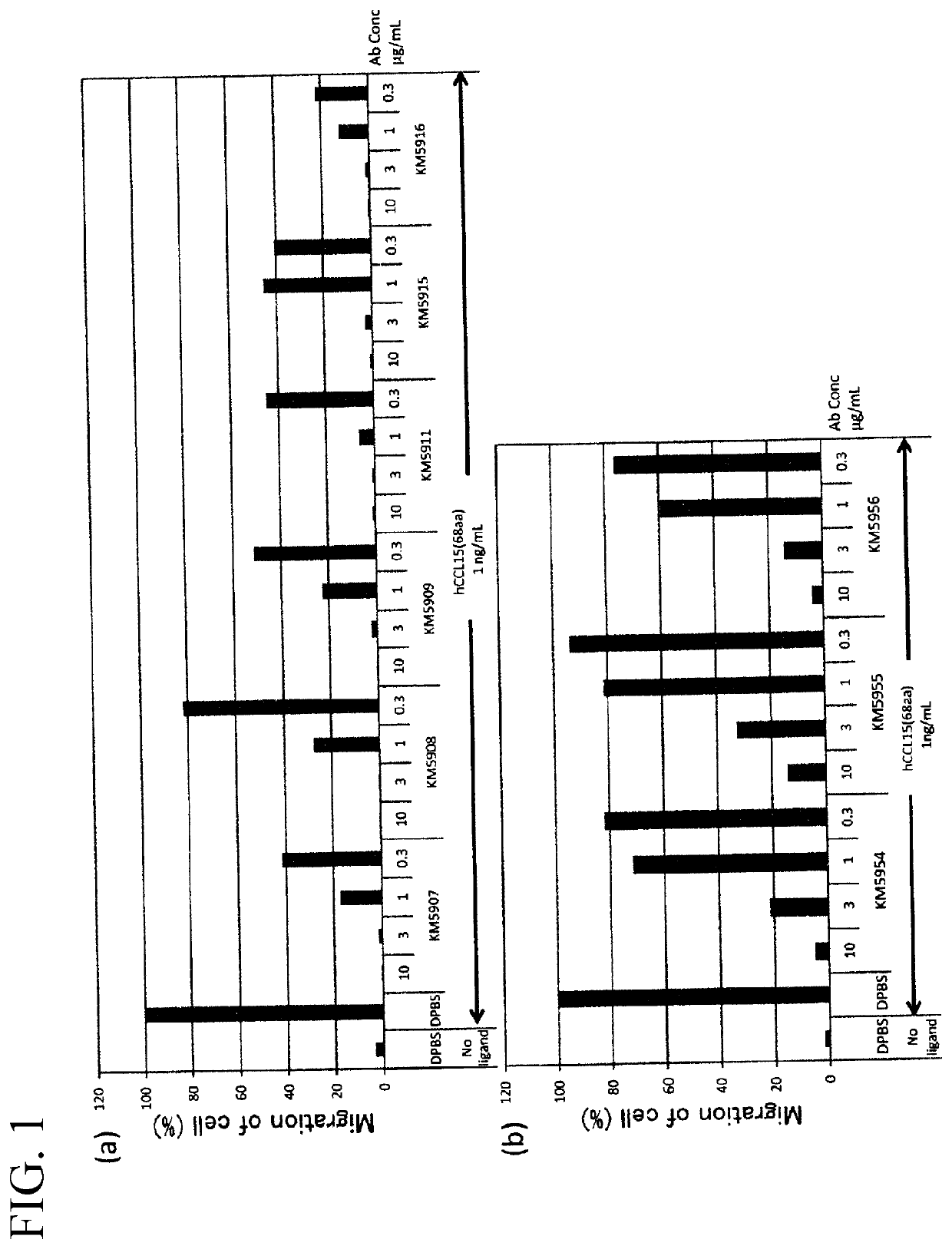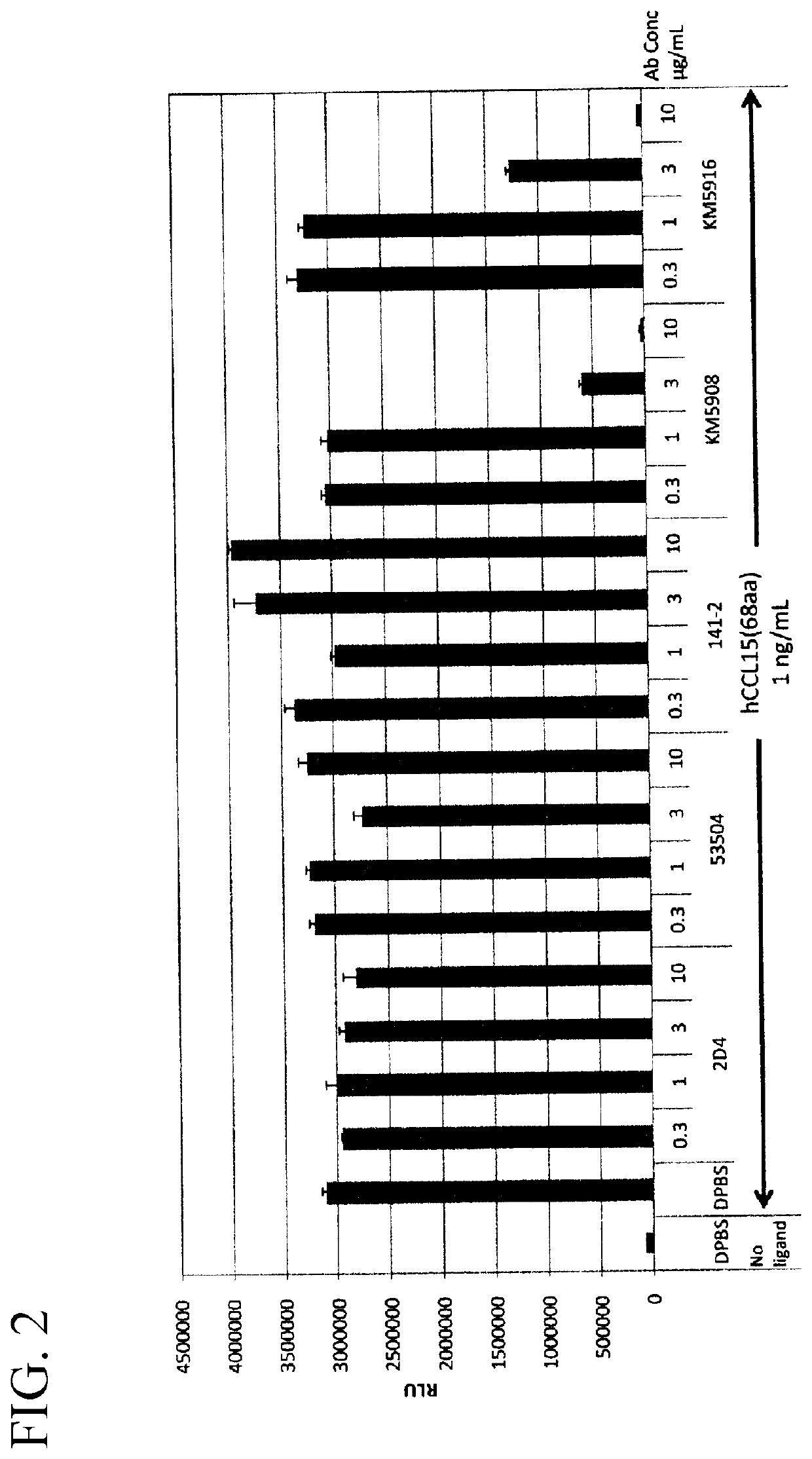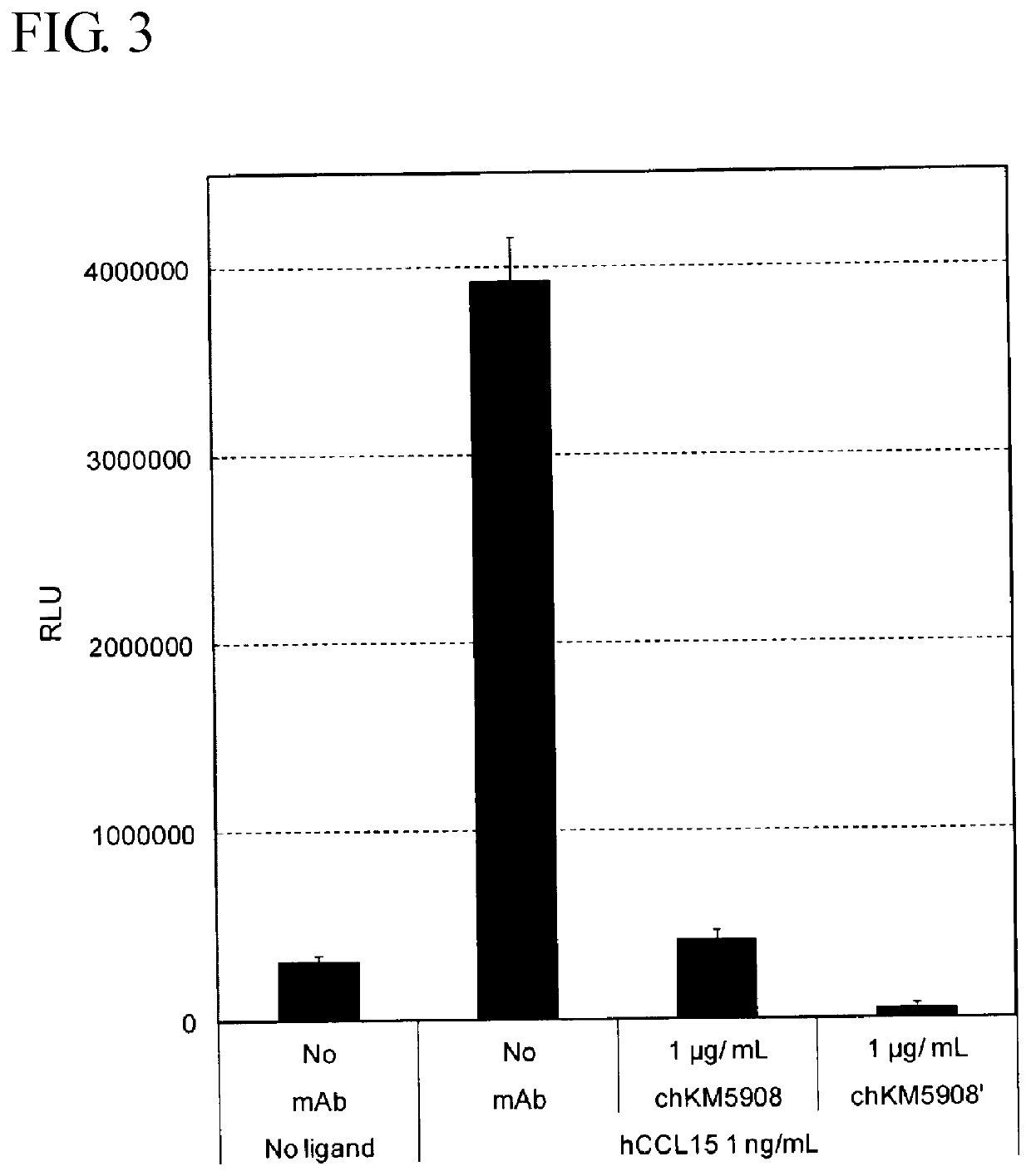Anti-human ccr1 monoclonal antibody
a monoclonal antibody and human antibody technology, applied in the field of monoclonal antibodies, can solve the problems that none of them have shown effectiveness, and achieve the effect of inhibiting various reactions
- Summary
- Abstract
- Description
- Claims
- Application Information
AI Technical Summary
Benefits of technology
Problems solved by technology
Method used
Image
Examples
example 1
[Example 1] Production of Expression Vectors for Human and Mouse CCR1s
(1) Production of Each CCR1 Gene
[0355]DNAs encoding the following 1 to 7 human or mouse CCR1 or CCR1-CCR3 chimeric receptors were synthesized (Genscript Japan). In the synthesis, restriction enzyme sites (BamHI and NotI) for incorporation into each vector and a Kozak sequence were added.
1. cDNA sequence (SEQ ID NO: 1) encoding human CCR1 (hereinafter, referred to as hCCR1)
2. cDNA sequence (SEQ ID NO: 3) encoding mouse CCR1 (hereinafter, referred to as mCCR1)
3. cDNA sequence (SEQ ID NO: 5) encoding human CCR3 (hereinafter, referred to as hCCR3)
4. cDNA sequence (SEQ ID NO: 6) encoding a chimeric receptor (hereinafter, referred to as NC3-hCCR1) in which the amino acid sequences at positions 1 to 31 in human CCR1 were substituted with the corresponding N-terminus amino acid sequence of human CCR3
5. cDNA sequence (SEQ ID NO: 7) encoding a chimeric receptor (hereinafter, referred to as NC3-mCCR1) in which the amino acid...
example 2
[Example 2] Production of CCR1-Expressing Cell Line
[0359](1) Production of hCCR1-Expressing Cell
[0360]An expressing cell line was obtained by co-introducing hCCR1 / Tn-pMug-Hygro, which is the plasmid DNA, produced in Example 1, and a To12 transposase expression vector TPEXp Mug (International Publication No. 2013 / 005649) into CHO—S(Thermo Fisher Scientific Inc.). Gene introduction was performed using Fugene HD (Promega Corporation) as follows. Cells prepared to 1×105 cells / mL were seeded in 2.5 mL each in a 6-well plate, and 24 hours later, a mixture of hCCR1 / Tn-pMug-Hygro, TPEXpMug, and Fugene HD was added to a culture solution. 72 hours after the addition, 1 mg / mL hygromycin (Invitrogen) was added, and drug selection was performed for about 2 weeks. The cells that acquired drug resistance were collected, and expression analysis was performed by flow cytometry (FACS Calibur, BD Biosciences). As a result, the expression of the introduced hCCR1 was confirmed. This cell line is referre...
example 3
[Example 3] Production of Anti-CCR1 Rabbit Polyclonal Antibody
[0364]An anti-CCR1 rabbit polyclonal antibody was produced by the following method. An N-terminus peptide (SEQ ID NO: 10) of the human CCR1 was synthesized, and two rabbits (New Zealand White) were immunized 5 times every 2 weeks. The immunization was carried out by subcutaneous injection at multiple locations on the back using Complete Freund's Adjuvant (CFA) only for the first time and Incomplete Freund's Adjuvant (IFA) for the second and subsequent times. The serum was collected from individuals whose the antibody valency increased after the immunization, and IgG was purified by affinity purification using a Protein A column (GE Healthcare). The anti-CCR1 rabbit polyclonal antibody thus produced was referred to as E5971.
PUM
| Property | Measurement | Unit |
|---|---|---|
| concentration | aaaaa | aaaaa |
| concentration | aaaaa | aaaaa |
| concentration | aaaaa | aaaaa |
Abstract
Description
Claims
Application Information
 Login to View More
Login to View More - R&D
- Intellectual Property
- Life Sciences
- Materials
- Tech Scout
- Unparalleled Data Quality
- Higher Quality Content
- 60% Fewer Hallucinations
Browse by: Latest US Patents, China's latest patents, Technical Efficacy Thesaurus, Application Domain, Technology Topic, Popular Technical Reports.
© 2025 PatSnap. All rights reserved.Legal|Privacy policy|Modern Slavery Act Transparency Statement|Sitemap|About US| Contact US: help@patsnap.com



